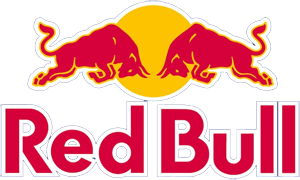Date: 16th July 2012
As I teach and guide I often get asked, “What do you always have in your pack?” My pack needs to be as light as possible while stile offering good survival options. I have to carry it up routes, not just hike with it. Below is my “minimalist” mandatory gear; yes, fire starters and many other things are nice, but this is what I think I need to survive and/or start a rescue in almost any mountain range around the world. Also note that the pack itself has to be light; if your pack is over two pounds “naked” then it needs to go on a diet; all of the below weighs less than three pounds total, so when I grab my pack for the day off the wall it should weigh less than 5 pounds before food, water, etc.
Posted in: Blog
Coach: To my first aid kit I add an Epipen and Benadryl just in case someone in the party is allergic to bee stings, etc. and an Albuterol inhaler for asthma: two things that will kill someone quick without treatment real treatment. I *always backup my raps using a Shunt. I know it’s heavy, etc, etc. But it idiot proof so even I can’t screw it up. It works on icy ropes. I can climb a rope with it and use it to escape the belay.
Timely, I’m just contemplating taking my old Arctereyx Bora 40 for a alpine day climb, thing’s good and solid, well used, but must weigh at least 6lbs. Not looking forward to that, although its great for carrying a heavy load, it’s always a pig while climbing.
Being seduced by the new light weight stuff now, I’m looking at the BD Speed 30 weights 2.8 lbs, it makes the weight cut, and I think would be a good size for most day climbs. What would you recommend in that size range?
hey will
great to see you going into this stuff – everyone loves a gear list and yours are particularly insightful.
one thing i include is to pack anything needing it (first aid, electronics, spare layer) in a 30L drybag that has a compression valve on it to squeeze and lock out air, or inflate by.
these bags have so many uses they are worth their weight in arcteyx: splint, thermal mat/cushion, water carrier, extra bag, flotation device, probably more.
i used to carry a thermarest for the same reason (splint, thermal value) but the drybag beats it on both weight and function.
some company in colorado (i think) makes them.
i also pack a few sachets of instant coffee.
keen to see your inReach review – been messing about with one myself for several applications and like it (tho get the feeling its early days so will be an epensive process of updating to emerging tech till it plateaus). even took mine to disneyland for the hell of it.
gotta mention the prussicks too: not used the starling ones myself, but have used homemade ones for years, along with a thing called a valdetanne for rescue, and great to see the idea spreading beyond a handful of european guides.
[…] out the list on Will Gadd’s site and see how it compares to what you […]
Echoing Craig’s comment, I’m replacing my packs this year and I’m struck by how over-featured the current major market is. I typically use a 30L for day trips and a 45L for overnights, and I’m perplexed that the 45L pack sizes don’t feature completely removable hip belts and back panels. I know I could get this if I went with Cilo or some other smaller pack company, but there are some other features I’d love to have in a pack that are more easily found (and more cost effective) with the major brands. For example, if I could somehow slap the BD Speed hip belts onto a BD Epic 45 pack, I’d do it in a heartbeat.
Meanwhile, I think I’m replacing my old Speed 28 with a Mountain Hardware Scrambler ULT 30. There’s a trail version as well that has mesh pockets on the sides, but what I particularly like about this one is the removable/replaceable compression straps.
We’ll see. I’m waiting until after the Summer OR Show so I can run around and take a hard look at all the options.
Until then, Will, what are you using for your guiding packs?
Kim, great call on the Epipen, Benadryl, and albuterol. As one of those guys who sometimes needs that stuff (my son too), I really appreciate your thoughtfulness in carrying it. Yes, people like me should carry our own (and I do), but not everyone is as careful as they should be. Plus, stuff fails–I’ve had Epipens explode in my pack too many times to count. Knowing that there are people like you out there made my day. Thanks!
My first aid kit also includes an oral thermometer, needle-nose tweezers, and moleskin. The thermometer has helped me determine the severity and type of illness–which can by critically important when trying to decide whether or not to bail.
I don’t see a knife in your kit. You don’t bring one?
No knife? Hummm… could you have some anger management issues you’d prefer to keep for yourself Will or do you really not see the necessity of bringing one?
Good thoughts, thanks for the comments. Notes:
Benadryl: Yes, usually lives in my “pill bottle,” along with pain pills. Forgot to mention it, weighs nothing and doesn’t add any bulk. If I’m out for days the first-aid kit gets beefed up some too, but not too much unless I’m in terrain where I can’t call for rescue.
Splint: I often stuff a Sam split down my pack’s back pad if it doesn’t have stays. With aluminum pack stays I have a great splint material at hand.
Knife: I pretty much always have a very small knife on my harness, useful for cutting anchor slings during climbing descents (but mostly not essential, and certainly a big knife is pretty much useless when judged by its weight). And on multi-day outdoors trips a knife becomes more useful, but then I’m packing all sorts of camping gear too. But I can cut cord with a rock easily enough, I can break cheese with my hands, there just aren’t really all that many situations where a knife is useful in recreational day-to-day mountain beating around. I’d rather bring another chocolate bar. I have never missed having a knife in the mountains surprisingly, many people seem conditioned to think they are essential but then can’t list regular uses for them (I’m not buying the “bear defence” tactic).
Things change radically in terms of preparation for urban or wilderness survival. Ed is very, very experienced in this field, good ideas, thanks.
Lighten up by sharing essentials that you only need one of among the group – first aid kit, tarp, map, knife, radio, etc. can go anywhere just so long as you have one of each and you’re going to be together in the field. Maybe even better to do this if you’re in a leadership situation, since it is going to be you taking the big fall or otherwise going first into potential trouble. I now actually plan to ‘shop’ gear from the harness loops of partners who leave for a climb kitted out like telephone linemen, too – it’s easier to reach than into my own pack.
Interesting comments on essential gear. Will’s list is pretty much what I carry but every pack I own has a small space blanket (actually the bag is often more useful) and a large garbage bag.
The space blanket/bag is incredibly useful in any accident scenario and in unforeseen foul weather a large (orange) garbage bag can be useful not to mention its possible role in signalling.
While almost anyware I always have my nano down jacket in my pack. It weighs next to nothing and if compressed takes up very little bulk. I am amazed how many times I pull it out when I never thought I would need it.
I'm more than happy to hear your thoughts on what I've written. Please note that all comments will be moderated before publishing. Thank you for joining the conversation.



